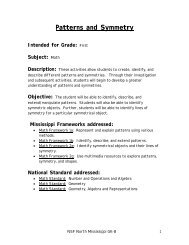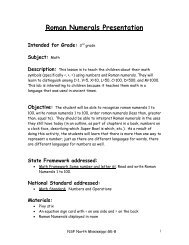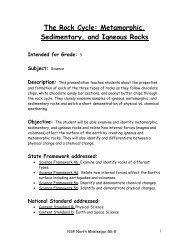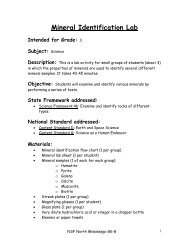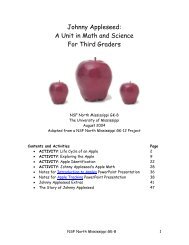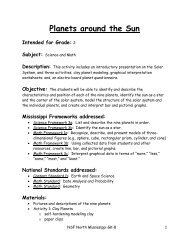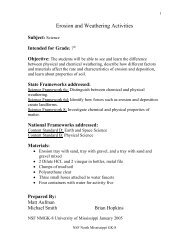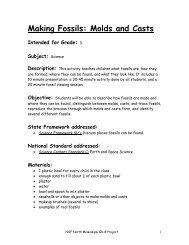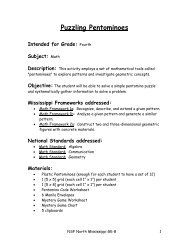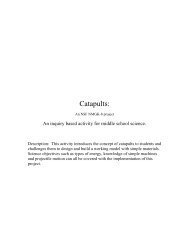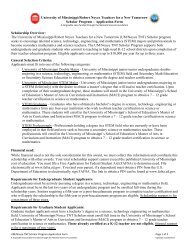GK-8 Project Submission Form - The Center for Mathematics and ...
GK-8 Project Submission Form - The Center for Mathematics and ...
GK-8 Project Submission Form - The Center for Mathematics and ...
- No tags were found...
You also want an ePaper? Increase the reach of your titles
YUMPU automatically turns print PDFs into web optimized ePapers that Google loves.
ASTEROIDS are the biggest space rocks. Asteroids are made up of rock <strong>and</strong> iron,just like the four planets closest to our Sun. <strong>The</strong>y are different from comets,which are mostly rock <strong>and</strong> ice <strong>and</strong> have tails. Asteroids are more like planets <strong>and</strong>moons. Scientists often call asteroids minor planets. Most asteroids orbit the Sunbetween Mars <strong>and</strong> Jupiter. This area is called the asteroid belt. <strong>The</strong>re are millionsof asteroids.As they bang around out there in space, these rocks break into smaller <strong>and</strong> smallerpieces that sometimes fall to Earth. Most of them burn up in streaks of light.Some asteroids crash into our planet <strong>and</strong> leave behind meteorites. Sometimes areally big asteroid will leave a giant crater.METEROIDS: Smaller pieces of rock <strong>and</strong> iron that travel through space are calledmeteoroids. Meteoroids orbit our Sun just like asteroids <strong>and</strong> planets.When a space rock enters Earth's atmosphere, it becomes a meteor - or shootingstar. <strong>The</strong> meteor heats up <strong>and</strong> makes the air around it glow, allowing us to see astreak of light. Most meteors burn up be<strong>for</strong>e they make it to the ground on earth.Scientists think up to 10,000 tons of meteors fall on the Earth each day, but mostare no bigger than a speck of dust.A meteor makes it all the way to ground without burning up in the atmosphere iscalled a meteorite. Meteorites range in size from tiny pebbles to boulders.Some planets <strong>and</strong> moons don't have enough atmosphere to protect them againstmeteor <strong>and</strong> asteroid impacts. Earth's moon, Mercury, <strong>and</strong> even Mars are coveredwith round impact craters from these collisions.Procedure:1. Discuss each of the planets, the sun, <strong>and</strong> the solar system with the students(while showing the picture cards).2. Split the class in half (into teams of 10- 12 students). Half of the class willmold planets out of clay (Activity 1) <strong>and</strong> the other half will draw a solarsystem picture on black construction paper (Activity 2). <strong>The</strong>n they willswitch. After these two activities have been completed, the whole class cango outside to do the solar system role play activity (Activity 3).NOTE: <strong>The</strong>se activities can all be done on the same day or they can be spreadout over several days.3. Activity 1: Clay PlanetsPrepared by NSF North Mississippi <strong>GK</strong>-8 <strong>Project</strong> 7



